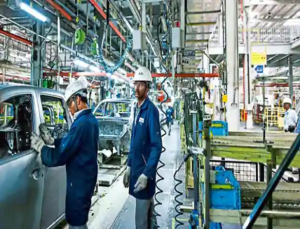
The state of Indian electronics sector as it copes with COVID-19, and effective post-pandemic strategies for the sector
Exploring new opportunities to make India the global hub of electronics manufacturing, and interventions required to achieve that
The defining trends shaping the sector in the long run
Exhibitions India Group and Embedded Tech India expo convened a panel of industry experts to deliberate the cause of ‘Atmanirbhar Bharat for Electronics Sector and Overcoming COVID-19.’ Almost 400 people attended the live webinar in the ongoing series that’s emerged to be widely appreciated from across sectors.
Moderator Mr. Sanjiv Narayan, Chairman, SGS Tekniks Manufacturing Pvt. Ltd. led an insightful panel, giving an accurate yet optimistic landscape of the Indian electronics sector. “The Indian electronics sector has the 2nd largest import bill, behind oil, with $58 billion worth of imports in 2019. The electronics industry is the backbone of development across many sectors in the country including agriculture, military, healthcare and more. Atmanirbhar Bharat requires a clear roadmap for the next 5 years in order to attain sustainable growth, and we are fortunate that our government has a clear vision with great implementation, such as clear duty structure across the entire manufacturing chain. We must integrate the vibrant Indian startup ecosystem in our endeavour to achieve this.”
Citing the favouring trends for India- the second largest global smartphone market in the world, Mr. S.K. Marwaha, Senior Director/ Scientist “G”, Ministry of Electronics and Information Technology, Government of India said, “We have to increase value-addition in order to cut down our import bill. There are government initiatives to support the industry, including 20-25% subsidies in manufacturing, electronics manufacturing scheme, mandated safety protocols, and most importantly- policies to encourage the adoption of domestic electronic manufacturers. The new national electronics policy proposes to build on the progress of last 5 years: CAGR of 23% in mobile market, CAGR of 38% in mobile exports, and the upwards trends are expected to continue. Another promising trend is the drop in imports of finished electronics products.”
Mr. Atul Bist, Head – Electronics Manufacturing, Make in India | Invest India, Ministry of Commerce & Industry, Government of India said, “It’s a focal point for the government to reenergize manufacturing in India; which has risen from 1.3% in 2012 to 3.5% in 2019. As 1/6th of the world’s population, India is one of the largest markets in terms of electronics consumption. The projection for the Indian electronic sector is to be worth $1 trillion. With digital transactions up by 10x, we know that a new digital era is being ushered in. Building a vibrant electronics ecosystem in central in achieving a positive import bill. As many global players move to decentralize their supply chains, India has a great opportunity to become a global hub of electronics.”
Optimistic about the future of Indian electronics sector with the vision of $5 trillion economy, Mr. Sanjay Gupta, Vice President & India Country Manager, NXP Semiconductors remarked, “While our domestic manufacturing is going well to cater to local demand, we are yet to see an Indian entity with capacities of the size of any global leaders- say Intel or Qualcomm. We need to tap into the huge talent in India, which combined with the right policies and incentives will push us towards an Atmanirbhar Bharat. We need to work with a strong focus on design in India, and manufacture in India, in order to create big design houses based on our own intellectual properties.”
Calling the industry and government working with shared goals a promising scenario, Mr. Varun Manwani, Director, Sahasra Group said, “Some of the government’s schemes are great for encouraging manufacturing in India. In the spirit of national and interest and ensuring data security for us, we can refer to our peer country China and promote our own products over foreign competitors. We should, of course forge gainful partnerships in order to encourage technical knowledge transfers from countries such as Korea or Netherlands. In order to enhance our prowess, change is required at the very basic academic levels, and subsequently at incubation levels so that we can create global hardware brands, and not just global tech brands.”
Mr. Sanjeev Agarwal, Chief Manufacturing Officer, Lava opined on the Indian market, “95% of final products in the mobile industry for domestic consumption are made in India. The government has provided great incentives with supporting policies such as PLI. It’s the responsibility of the industry now to create a robust startup ecosystem. With our domestic requirements being almost met, the focus must now be on improving exports, and to compete in the global market means having to manufacture products with competitiveness in terms of services, cost and quality. Our next steps must foray deep into the supply chain and start manufacturing components locally as we gear to compete on a global scale.”
Referring to the two-pronged effects of COVID-19 on the sector, Mr. Hemant Mallapur, Founder & EVP Engineering, Saankhya Labs said, “Whilst the pandemic has had a big economic impact, it has also provided a great opportunity to India to emerge as a leader. As a lot of businesses start to move away from China, we must shift the focus to manufacturing domestically. There’s a paradigm shift here, as new business orders have started coming in to domestic players. While Vocal for Local is a great initiative and the government’s support makes it a powerful tool, we must walk the talk and create competing products domestically.”
You may view a recording of the webinar here:
https://www.facebook.com/watch/?v=624943998145722











